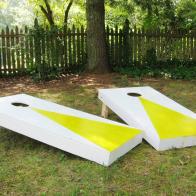First, What Do I Mean by Rewilding?
Gardening trends are moving toward a deeper, more holistic approach to growing. Two such movements are rewilding and regenerative gardening, but what exactly do these words mean? Rewilding is a form of ecological restoration. It asks us to consider how nature grows itself and how we can mimic and encourage natural systems, create habitat and support biodiversity in our home gardens and communities. Rewilding involves regenerative practices, a set of common-sense principles for regrowing and supporting nature. Some of the core tenants of regenerative gardening are caring for soil, feeding soil organic matter such as compost, planting a diverse range of plants and considering how we can “grow more good.” It’s a step beyond organic. A no-dig practice called sheet mulching (which I’ll show and explain later), and native plantings are two regenerative practices I rely on for rewilding — they create habitat for people and wildlife.
Collectively, my garden, your garden, your neighbor’s garden and so on have the power to make a difference. Together, we have the opportunity to support biodiversity, mitigate the climate crisis and grow resilient communities — places that are good for us too. Considering that 139 million acres in the United States are dedicated to urban and suburban living, the possibilities are profound.









